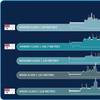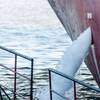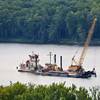Marine News November: Editor's Note
Optimizing both a fleet of workboats and the business model that makes all of that possible is probably the highest priority item on your plate, every day. And, as you will soon discover within the pages of the latest edition of MarineNews, fleet optimization can mean 10 different things to 10 different operators. The way forward for those that will survive this robust but equally difficult business climate necessarily involves regulatory compliance, a weather eye on new rulemaking efforts that loom large in the center porthole, successfully navigating the need for the Holy Grail of fuel economy and reduced stack emissions and a dozen more goals. I don’t have to list them all; you already know what you are up against.
As complicated as it may seem, my take on fleet optimization nevertheless says that it can be boiled down to the lowest common denominator of remote monitoring. That’s right: remote monitoring. Today’s marine equipment, technology and sophisticated communications capabilities allow operators to see virtually every aspect of their far flung fleets, in real time and down to the smallest of detail. What do you wish that you could see, right now? Chances are; you can do that. That high-tech window on your business world won’t be inexpensive but the future dividends promise a handsome return on that investment. The story starts on page 38.
Optimizing a fleet in 2013 and beyond will also involve compliance with a complicated regulatory scheme that is still evolving. The United States Coast Guard, for example, alone has almost 70 new rulemaking proposals in play at this time, never mind anything individual states, the IMO and EPA can cook up on their own. I don’t have a crystal ball to see what all of that is going to entail, when it will happen, and why. And, neither do you. Nevertheless, business decisions will have to be made today based on assumptions that may or may not represent the actual regulatory scheme(s) that come to pass. Hence, a large portion of this edition is also devoted to providing guidance and some clarity for marine operators who find themselves scratching their heads as to what to do next.
The sobering truth for maritime stakeholders, especially those domestic operators right here at home, is that some aspects of business conditions will always be beyond their immediate control. You can “optimize” to prepare for all eventualities, but for things like port infrastructure, locks and dams and even the bare bones luxury of minimum under keel clearance in our waterways, we need to hope that the government does their part, as well. Also within these pages, you will find out why this isn’t always the case.
As you go about your daily business, industry advocates, trade associations and stakeholders continue to beat the drum on your behalf. So, too, will MarineNews. That’s because – unlike the trip that takes a vessel from point A to point B with your customer’s cargo – there is simply no end to this particular voyage.
(As published in the November 2013 edition of Marine News - www.marinelink.com)












